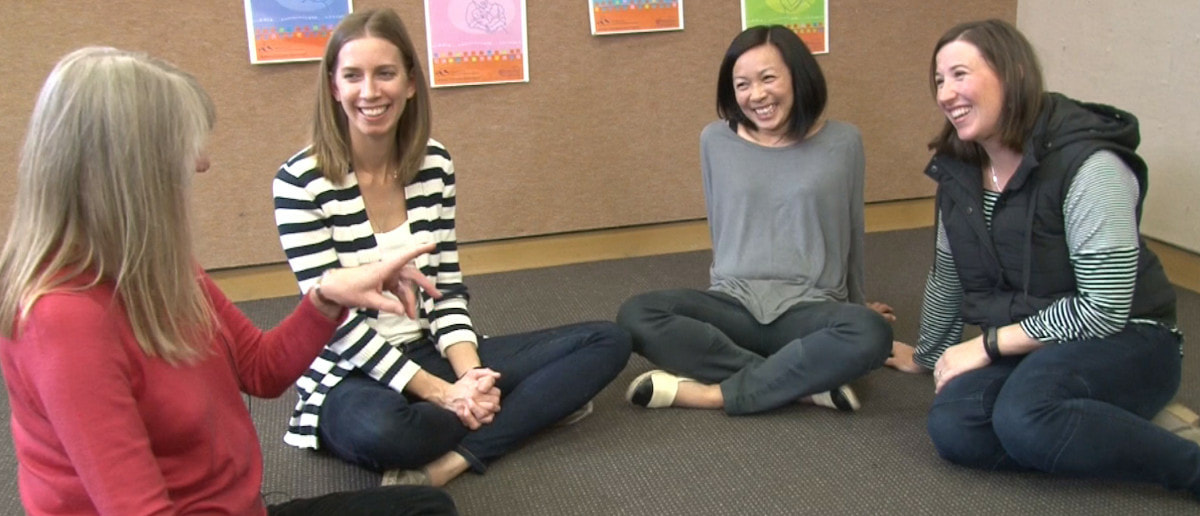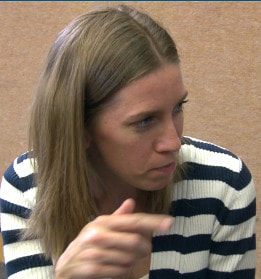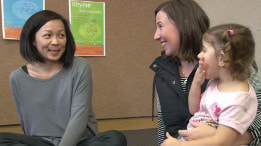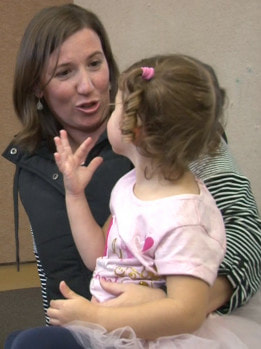Storytelling tips for program facilitators
Follow a few simple principles to engage your group with storytelling
|
Each Parent-Child Mother Goose session involves the use of songs and rhymes, but there is a special place for story telling.
In the past, people from many cultures have told stories to entertain, to instruct, to heal and to explain. Usually these stories were told face-to-face, person to person. Today, this tradition has dropped away, which may be why facilitators of Parent-Child Mother Goose programs sometimes sometimes tell us they feel less confident about leading the storytelling part of the program. Facilitators sometimes report feeling less confident about
leading the storytelling part of the program. Depending on the type of program you're running, you'll use stories in different ways.
How to succeed at storytellingBelow, you'll find some tips for successful storytelling, and links to some lovely examples of storytelling you might like to adapt for use in your own program.
Here are a few tips we have found helpful:
Some examplesHere are some great examples of stories and longer rhymes suitable for use in a Parent-Child Mother Goose group:
You can find a collection of short and long stories read by well-known actors at StorylineOnline. Australian author, storyteller and parent educator Susan Perrow has made some of her own excellent stories for children and adults available free of charge at http://susanperrow.com/stories. And even if you're not a librarian, do check out the very funny Chicken in the library. Know of some other good tips or examples?We'll be hoping to add to this page from time to time. If you've got any great storytelling tips you'd like to share, or you'd like to recommend some other good stories told online, please do get in touch.
|



